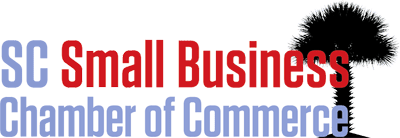FOR IMMEDIATE RELEASE: May 4, 2015
Contact: at end
New Report Shows Growing Market Potential for Safer Chemicals
Study is First to Build Comprehensive Picture of Financial Costs and Benefits
WASHINGTON, DC – A new report finds significant market growth potential for safer, less toxic chemicals. The report from Trucost, an independent research firm, builds a strong case for the growing market potential for safer chemicals based on an in depth examination of economic research, market trends, and interviews with business across the value chain. The research was commissioned by the Green Chemistry & Commerce Council (CG3) and the American Sustainable Business Council (ASBC). Co-Chair of ASBC is Frank Knapp Jr., who is also the president and CEO of the South Carolina Small Business Chamber of Commerce (SCSBCC).
The report entitled, “Making the Business & Economic Case for Safer Chemistry,” evaluates the potential business and economic value of safer chemistry. This includes reducing the use and generation of hazardous substances, reducing the human health and environmental impacts of processes and products, and creating safer products. The research included interviews with 17 industry experts, as well as a review of literature and available data on the business and economic opportunities achievable through safer chemistry and the business and economic value at risk from not adopting safer chemistry. The full report may be found here: http://bit.ly/ASBCSaferChemicalsReport
Among the findings in the report are:
- The market for safer chemicals is estimated to have 24 times the growth of conventional chemicals market worldwide, from 2011 to 2020.
- A growing market demand for safer ingredients across various products, including personal care, cleaning products, baby products, apparel and footwear, healthcare, electronics, building materials and furnishings
- Potential financial costs of conventional chemistry, including regulatory fines, loss of access to markets, and social costs of accidents and incidents are driving the market for safer alternatives.
- Job growth in safer goods and services is well ahead of conventional chemical industry.
“As small business owners we are concerned about toxic chemicals that are in the products we use for manufacturing or sell to our customers,” said Frank Knapp, Co-Chair of ASBC. “This report makes it clear that transitioning to safer chemicals is good for our individual businesses but good for the whole economy. Our policy-makers should take notice and help move us into a healthier future that has great business potential.”
“Trucost’s research clearly demonstrates the business benefits of safer chemicals. By translating the risks and opportunities of green chemistry into economic terms, the results will help companies move from awareness to action,” said Richard Mattison, chief executive of Trucost. “It also helps communicate the benefits of more sustainable products and business models to policymakers, investors and other stakeholders.”
“Trucost’s analysis demonstrates the important value to both the economy and health in investing in research, development and scaling of innovative green chemistry solutions, said Dr. Joel Tickner, Director of the Green Chemistry and Commerce Council. “Given increasing market, policy, and consumer drivers, the report points out the essential roles of enhanced value chain collaboration and the need for better metrics in accelerating safer chemistry.”
The Green Chemistry and Commerce Council (GC3) is a cross sectoral, business-to-business network of companies and other organizations working collaboratively to accelerate research in and adoption of green chemistry across sectors and supply chains. www.greenchemistryandcommerce.org
Trucost is an expert consultancy, helping companies, investors, governments, academics and thought leaders to understand the economic consequences of natural capital dependency. Trucost’s world leading data and insight enables clients to identify natural capital dependency across companies, products, supply chains and investments; manage risk from volatile commodity prices and increasing environmental costs; and ultimately build more sustainable business models and brands. Trucost’s approach not only quantifies natural capital dependency, it also put a price on it, helping clients understand environmental risk in business terms.
The American Sustainable Business Council and the ASBC Action Fund represent organization members that span more than 200,000 businesses nationwide, and more than 325,000 entrepreneurs, executives, managers and investors. The Council www.asbcouncil.org informs policy makers, business owners and the public about the need and opportunities for building a vibrant and sustainable economy. The Action Fund www.asbcaction.org advocates for legislative change.
###
Contact:
For SCSBCC: Frank Knapp, (803) 252-5733, fknapp@scsbc.org
For ASBC: Bob Keener, (617) 610-6766, bkeener@asbcouncil.org
For GC3: Joel Tickner, 978-790-7353, joel_tickner@uml.edu
For Trucost: James Richens, +44 (0)20 7160 9804, james.richens@trucost.com

